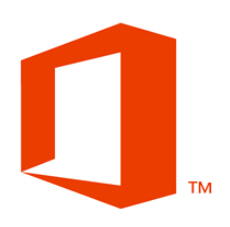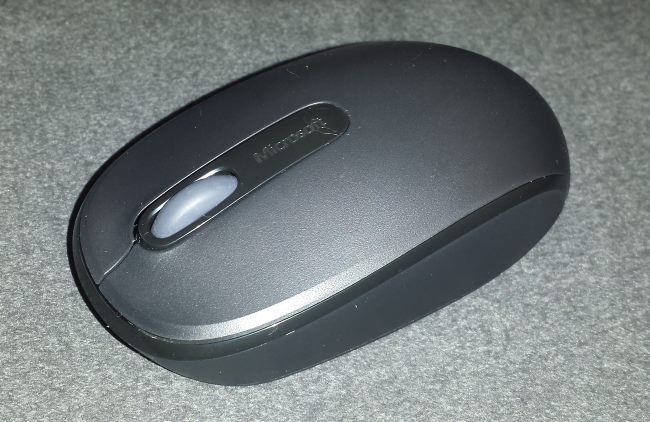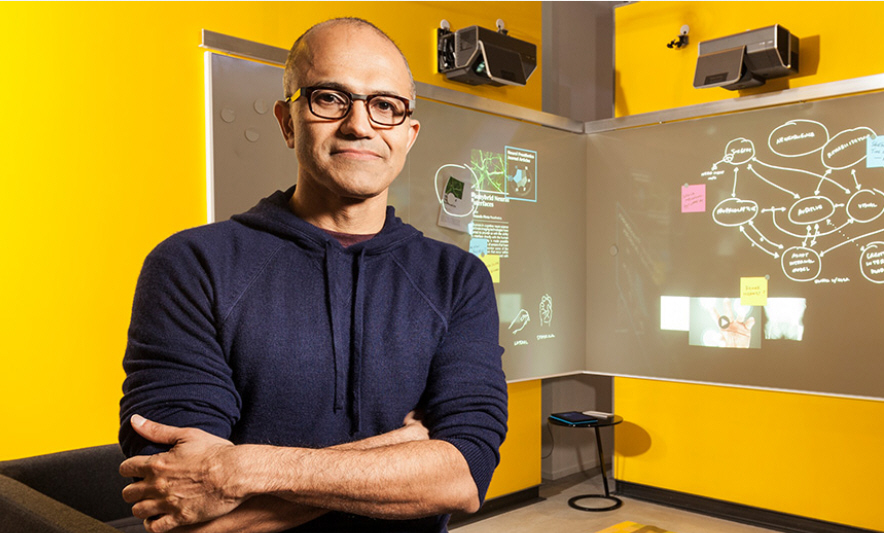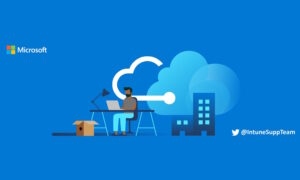
Microsoft launches Office for iPad
It’s taken a very long time, but today, finally, Microsoft unveiled Office for iPad. Despite the name, Office for iPad is three separate apps -- Word, Excel and PowerPoint -- which are individually available in the App store.
The apps have a familiar interface, with the same Ribbon interface and layout. But at the same time, they’re not just a port of the regular desktop version. Menus have been optimized for touch; objects can similarly be dragged, rotated or resized with a swipe; Excel has a special formula keyboard to help you enter data quickly, and everything scales properly in both portrait and landscape mode.

Amazon announces April 2nd event featuring an update on video
Invitations have been hitting email inboxes today for an Amazon event, even as Microsoft was busy holding its own show. The invitation hints at what is coming, though it does not come right out and say exactly what to expect.
For now we know only one thing, the subject – "Please join us for an update on our video business". The company frequently updates its Prime video library, partnering with an increasing number of studios. These can be a big deal, depending on the movies and TV shows that come along for the ride, but the announcements have always warranted nothing more than a blog post. In other words, this is something bigger.

DiskAid speeds up device cloning, improves backup and restore options
DigiDNA has released DiskAid 6.6, a new build of its tool for converting spare storage on an iOS device into an external hard drive for wireless or USB access from a Windows or Mac computer.
Version 6.6 speeds up cloning one device to others, improves support for restoring device backups and allows users to manually add or remove contacts on the iPhone via USB.

Government requests at Google increase 120 percent -- your privacy is under attack
When you choose to establish a relationship with a company, there is a certain level of trust. You hope that the company "has your back". However, you can never be 100 percent sure. After all, companies are run by real people and human beings are not infallible. Things get muddied further when governments get involved. Quite often, a company may be forced to do something against its users' wishes, due to a government order. Even worse, the same government may ban the company from speaking about it.
Google is a company that many users trust. Nowadays, you almost have to, as the company's tentacles expand to the furthest reaches of the Internet. While Google allegedly participated in the NSA Prism program, it still seems to have its users' privacy in mind. To showcase its commitment, the search-giant began publishing a transparency report in 2009, which highlighted the number of government requests. Today, the company announces that those types of requests have skyrocketed a staggering 120 percent since the report began.

Windows' future is looking increasingly bleak
Analyst Gartner has just released its latest worldwide devices forecast, which shows, unsurprisingly, traditional PC shipments declining, and tablets, mobile phones, and ultramobiles (hybrid and clamshell) all growing. In total, device shipments are set to rise 6.9 percent, up from the 4.8 percent growth achieved last year.
There are few surprises in the report. Shipments of mobile phones, the most popular device type in the market, are expected to reach 1.9 billion units in 2014, a 4.9 percent increase from 2013. The worldwide tablet market is forecast to grow 38.6 percent in 2014, shipments of traditional PCs are forecast to total 276.7 million units in 2014 (a 6.6 percent decline from 2013), and ultramobiles are set to grow from 21.1 million in 2013 to 37.2 million this year. Gartner has also forecast shipments by operating systems, and while Windows still shows growth, overall it's far from happy times ahead for Microsoft.

The cheap, cheerful and lovable Microsoft Wireless 1850 mouse [Review]
What can you get for $15 these days? Not a lot, really. A few Starbucks, perhaps, a burrito and a couple of slices? Or you can get yourself a cheaper, almost throwaway, replacement mouse to chuck in your laptop bag. This is the bill that the Microsoft Wireless 1850 fits. The mouse was announced just recently, and we've got our hands on one to put through its paces. To cut to the chase, this is a perfectly acceptable mouse, but it ain't going to blow your mind.
This is a mouse designed with the pocket in mind in more ways than one. Yes, it's super low-cost, but it's also super lightweight; and I mean that both in terms of mass and features. Oh, at this point it's worth highlighting something I touched upon the other day when talking about the price of digital downloads. While in the US this mouse costs $14.95, over here in the UK it has a £16.99 price tag. Sure, US buyers have to factor in taxes, but $14.95 should translate into about £9, so the trip across the ocean from One Microsoft Way has resulted in the price almost doubling!

DDoS traffic soars and the bots get cleverer
New research by website security specialist Incapsula looks at the impact of DDoS traffic on the internet with data collected over a five month period looking at over 154 million DDoS bot sessions.
It reveals some startling statistics, the main one being that at the application level DDoS bot traffic is up by 240 percent. More than 25 percent of all botnets are located in India, China and Iran, whilst the US ranks fifth in the top ten attacking countries.

Younger Millennials watch more video on alternative devices than TV
It doesn’t come as any real surprise that more video is being consumed on alternative devices. With a growing amount of choice from services like Hulu, Netflix, YouTube and others, our video entertainment no longer requires a TV.
According to a new study conducted by Deloitte, the younger portion of the Millennial generation, those aged 14-24, now consume the majority of their video through alternative devices -- computers, smartphones, tablets and gaming devices.

Watch Microsoft CEO Satya Nadella’s Office for iPad announcement
At 10am PT, Microsoft CEO Satya Nadella is set to discuss the intersection of cloud and mobile at an event in San Francisco.
Although there’s no mention of it in the details we’ve seen, and no pre-briefings have been given, it’s widely expected that Office for iPad will be unveiled at the event. This will be a big move for Microsoft if it turns out to be the case, but unlike Apple's iWork suite for iPad, which is sold for a one-time fee (and provided free on new iPads), Microsoft will likely tie access into Office 365.

Songza to deliver weather-driven music recommendations
Songza is an online music streaming service that attempts to predict what you're doing or feeling -- based on day, time, device type, location and past behavior -- and provide a curated playlist to suit. It offers playlists for a range of diverse activities such as waking up, working out, commuting, concentrating, unwinding, entertaining, and sleeping.
Today, the service adds a new trick -- providing music to match the current weather. Thanks to a new partnership with The Weather Company, parent to The Weather Channel, Songza will now attempt to use weather data to better predict the "context" or state of mind of the user.

Microsoft Azure opens its cloud doors in China
After announcing the upcoming rebranding of Windows Azure to Microsoft Azure, the software giant has revealed its cloud platform is now broadly available in China. 21Vianet is responsible for the operation in the local Asian market.
"This significant milestone makes us the first global company to make onshore public cloud services available to customers in China", says Microsoft corporate vice president of Cloud & Enterprise Marketing Takeshi Numoto. Microsoft Azure has been available to local customers since June 6, last year, but only as a public preview.

South Korean mobile operators jump the gun on Samsung Galaxy S5 launch
Mobile operators in Samsung's home country of South Korea have decided to give themselves a head start on the Galaxy S5 launch, by making the smartphone available starting March 27. Its official worldwide launch is slated for next month, on April 11.
SK Telecom, KT and LG UPlus are the local mobile operators in question, with SK Telecom being the largest one in South Korea. Two weeks ahead of the official launch, the smartphone is on sale for ₩866,800 (roughly $809 or €587).

Kim Dotcom takes on politics and Bitcoin with the Internet Party
Kim Dotcom -- the man behind the infamous MegaUpload, and then Mega -- has been out of the spotlight for a little while, but now he's back with renewed strength. This time around he's not trying to launch a new service, but a new branch of his career. Not content with bringing free cloud storage to the masses, Dotcom is now venturing into politics, launching the Internet Party in New Zealand. He finds himself in an interesting position as he is currently fighting extradition to the US where he faces charges of infringing copyright.
As the name suggests, the Internet Party is concerned primarily with what's happening online. The party has a fairly simple mission statement. "The Internet Party was founded on the spirit of the Internet, to get an open, free, fair, connected and innovative society". It is described as "a party that will give you faster, cheaper Internet, create high-tech jobs, protect your privacy, and safeguard our independence".

iTunes Match made in heaven, ah, the cloud
Overnight Monday, I explained how "iTunes slaps DRM handcuffs on my music". Later that day, an Apple representative proactively contacted me seeking to resolve the problem. Someone still reads what I write. That started a process that mostly removed rights protection from my music and identifies several iTunes Match benefits not necessarily obvious but useful to most any Apple music buyer.
Recap: In October 2007, I declared DRM freedom and removed all rights-protected tracks from my library. For some unidentified reason, on Sunday, iTunes presented me with option to fetch from the cloud these previously purchased but deleted songs. Downloading retrieved the long-absent music in the original 128kbps protected-AAC format, not the newer, 256kbps DRM-free files. Now I know why.

Linux desktop environment GNOME 3.12 available
One of the great things about Linux distributions is the customization. In contrast, an operating system like Windows 8 is rather limited. Sure, you can change some colors, wallpapers and sounds, but pretty much, it is what it is. What you see is what you get. That is probably fine for most people, however, Linux users are not most people.
With an operating system such as Ubuntu or Fedora, the user can choose the interface in which they will interact. There are many desktop environments to choose from too, such as KDE, Mate, or my favorite, GNOME 3. Today, the open-source community is treated to the newest version of GNOME -- 3.12. Linux users can start salivating now.



